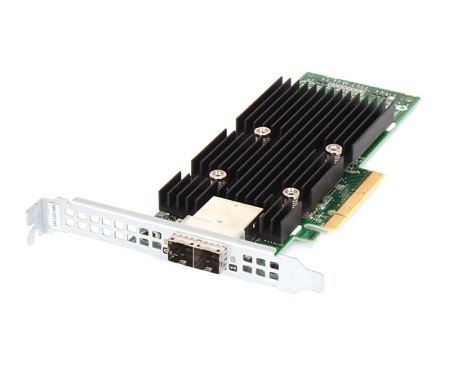What are Raid cards and HBA cards?
An raid card is a type of expansion card that can integrate multiple hard disks into a larger logical volume. This logical volume can be recognized by the operating system as a separate storage device to achieve efficient storage and access to large-capacity data.
HBA card is a PCIe device display technology. It can cut a physical device into multiple virtual devices, and each virtual device looks like an independent physical device, so that each virtual device can be allocated to different virtual machines.

The difference between Raid card and HBA card
Although both raid cards and HBA cards can enhance system performance, their application scenarios and functions are different. Here are the main differences between the two cards:
1. Different functions
Raid cards are usually used in servers or high-performance workstations, which can integrate multiple hard disks into a logical storage device, and provide faster data read and write speeds and higher storage capacity. It can form dozens or even hundreds of hard disks into a large disk Raid, supports multiple Raid technologies, and provides data backup and recovery functions, there by providing users with more efficient data management and protection.
The HBA card is a solution for virtualized servers. It can directly assign a real hardware device to a virtual machine, so that the operating system of the virtual machine can directly access these devices without sharing device resources. This approach provides higher performance and stability for virtual machines and minimizes interference between virtual machines.
2. Hardware performance
An Raid card is a hardware device, which usually has an independent high-speed memory and a processor, and can process data packets through hardware. Raid cards support multiple Raid levels and can help system administrators identify, adjust and manage failed hard disks in disk raids. Through these hardware optimizations, the raid card can not only improve the data storage and processing speed of the computer system, but also ensure the stability and reliability of the data.
The HBA card is realized by hardware virtualization. It does not have a separate processor and memory, but cuts physical devices into virtual devices through virtualization technology, and then assigns these virtual devices to virtual machines for use. Therefore, the performance of the HBA card depends on the implementation efficiency of virtualization technology and the allocation method of hardware resources.
3. Applicable environment
Raid cards are suitable for servers and workstations that need to back up and manage large amounts of data, such as enterprise application servers and large data centers. It can help administrators easily manage disk raids composed of multiple hard disks, and can provide advanced functions such as data protection and data recovery to ensure data security and reliability.
The HBA card is suitable for virtualized server environments, especially high-performance computing applications, high-demand data exchange applications and other fields. Virtualization technology can maximize the use of physical device performance and storage resources, while ensuring the isolation and security of different virtual machines.
In conclusion
To sum up, the raid card and the HBA card are two different cards, and their main application scenarios and functions are different. Raid cards are usually used in high-performance servers and workstations for data backup and management. Its main function is to improve the efficiency of data storage and access while ensuring data reliability and stability. The HBA card is a solution for virtualization servers. Its main function is to provide virtual machines with higher performance and stability, and to ensure isolation and security between virtual machines. Therefore, when choosing a card, you need to choose according to your actual needs.
评论
发表评论